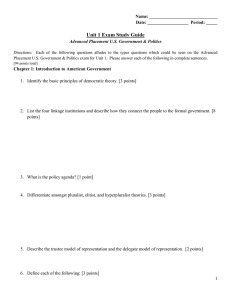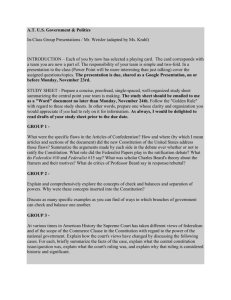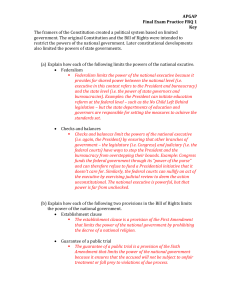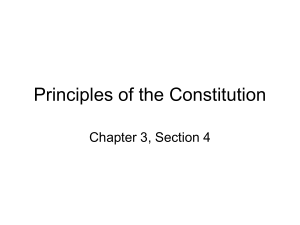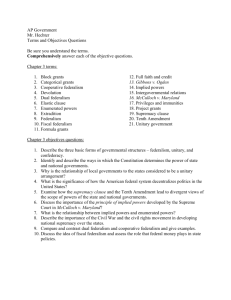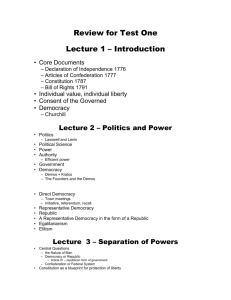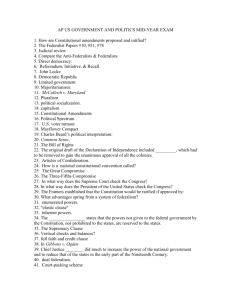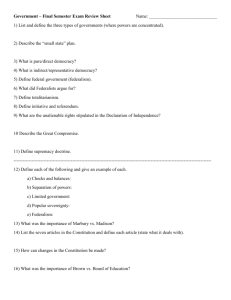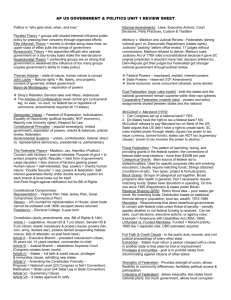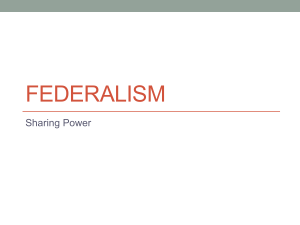AP Government Ÿ Unit I Exam Study Guide Ÿ Mr
advertisement
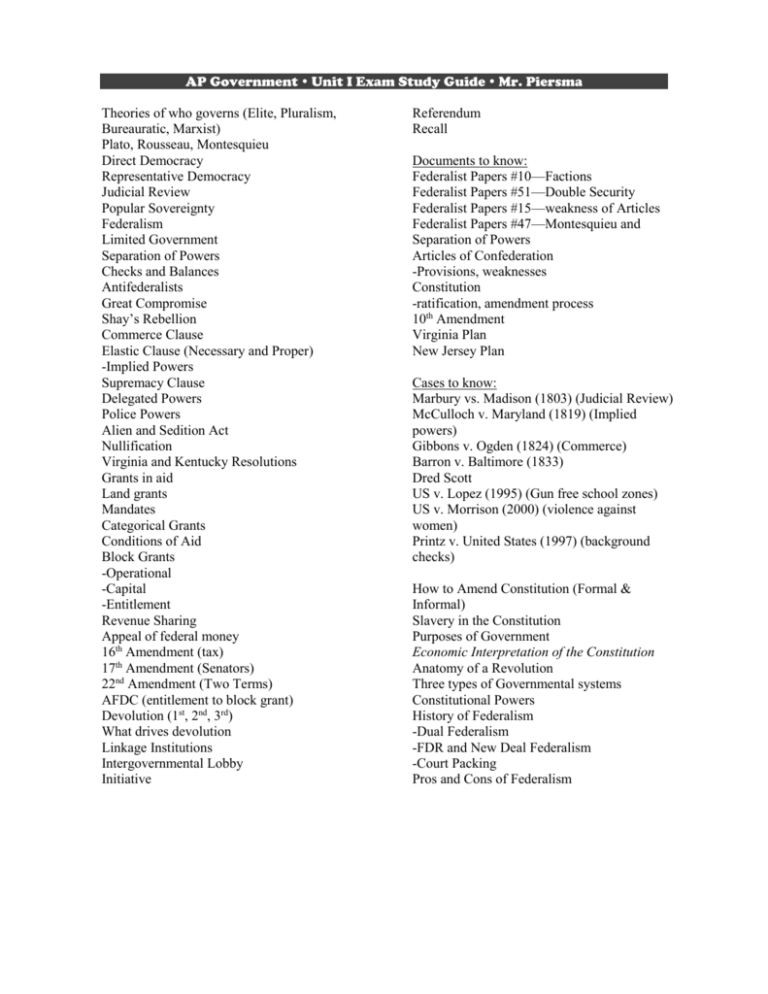
AP Government Unit I Exam Study Guide Mr. Piersma Theories of who governs (Elite, Pluralism, Bureauratic, Marxist) Plato, Rousseau, Montesquieu Direct Democracy Representative Democracy Judicial Review Popular Sovereignty Federalism Limited Government Separation of Powers Checks and Balances Antifederalists Great Compromise Shay’s Rebellion Commerce Clause Elastic Clause (Necessary and Proper) -Implied Powers Supremacy Clause Delegated Powers Police Powers Alien and Sedition Act Nullification Virginia and Kentucky Resolutions Grants in aid Land grants Mandates Categorical Grants Conditions of Aid Block Grants -Operational -Capital -Entitlement Revenue Sharing Appeal of federal money 16th Amendment (tax) 17th Amendment (Senators) 22nd Amendment (Two Terms) AFDC (entitlement to block grant) Devolution (1st, 2nd, 3rd) What drives devolution Linkage Institutions Intergovernmental Lobby Initiative Referendum Recall Documents to know: Federalist Papers #10—Factions Federalist Papers #51—Double Security Federalist Papers #15—weakness of Articles Federalist Papers #47—Montesquieu and Separation of Powers Articles of Confederation -Provisions, weaknesses Constitution -ratification, amendment process 10th Amendment Virginia Plan New Jersey Plan Cases to know: Marbury vs. Madison (1803) (Judicial Review) McCulloch v. Maryland (1819) (Implied powers) Gibbons v. Ogden (1824) (Commerce) Barron v. Baltimore (1833) Dred Scott US v. Lopez (1995) (Gun free school zones) US v. Morrison (2000) (violence against women) Printz v. United States (1997) (background checks) How to Amend Constitution (Formal & Informal) Slavery in the Constitution Purposes of Government Economic Interpretation of the Constitution Anatomy of a Revolution Three types of Governmental systems Constitutional Powers History of Federalism -Dual Federalism -FDR and New Deal Federalism -Court Packing Pros and Cons of Federalism



